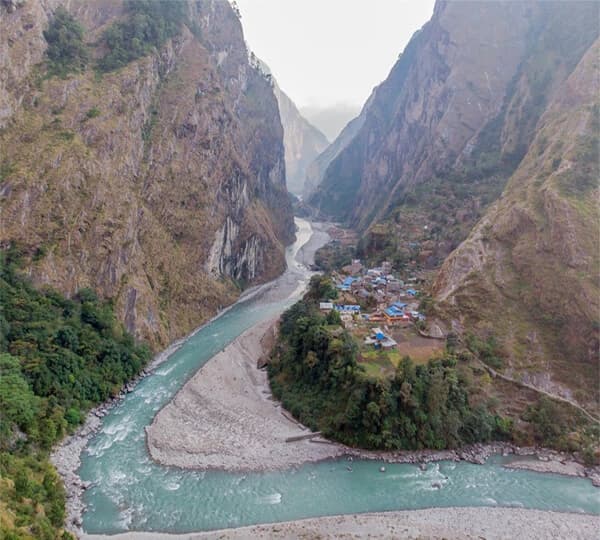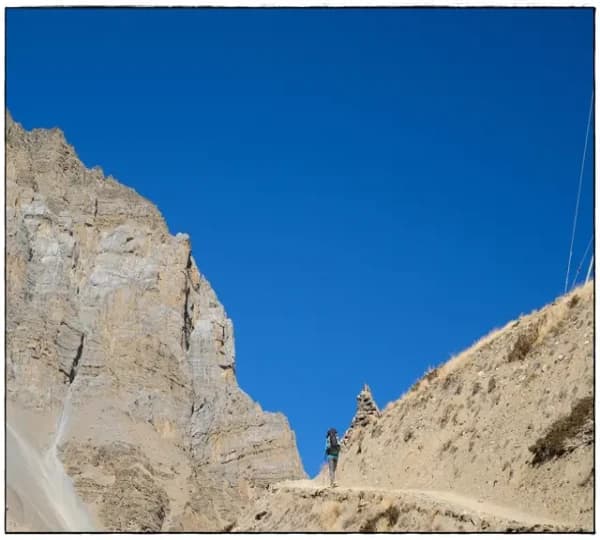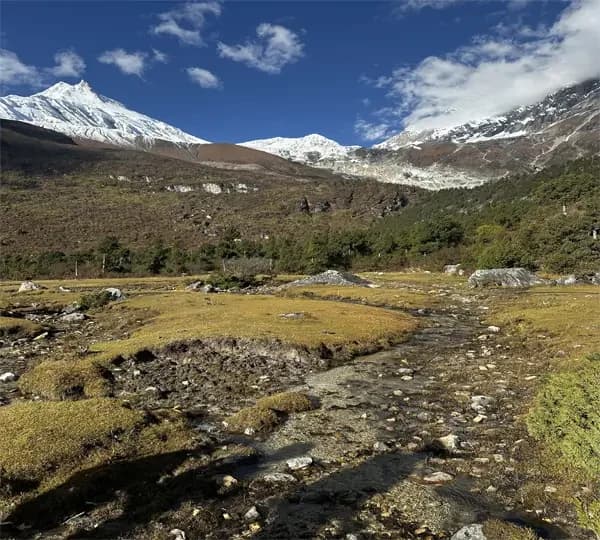Langtang Valley Trek Permit
Exploring the Langtang Valley Trek is one of the most beautiful and easy treks among all the available treks to explore in Nepal. Langtang Valley lies under the Langtang National Park Zone with special conservation status to protect the features of its geophysical environment and biodiversity. With several plant and animal species making the park their home, it offers an added attraction to the trek.
The trip from Kathmandu to the starting point of the Langtang Valley Trek is approximately 122 km, making the hike an easy and viable trip for tourists eager to immerse themselves in the beauty of nature and explore Nepal’s rich culture. The Langtang Valley Trek distance is around 77 kilometers, where you will need to walk around 5-6 kilometers each day.
As you trek through the breathtaking mountain ranges, you will visit beautiful Tamang villages, monasteries, and traverse across yak pastures, thereby experiencing the rich cultures of the Himalayas. The Langtang trail runs alongside the river and passes through some areas of bamboo and Rhododendron forests, which are very spectacular throughout the spring season when rhododendrons and other flowers start blooming.
Exploring Langtang Valley presents many reasons why trekking is such an interesting activity. First, these treks give a natural calm with the feeling of being at a high altitude without trodden paths like the Everest or Annapurna routes. It often ranges from 7 to 10 days, which again is favorable for time-bound hikers or those who want to engage in additional leisurely activities in the region.
Aside from the adventure in the terrain, another thrill of going to the Langtang Valley is getting to experience the way of the locals. This is in respect to the hospitable nature of the indigenous Tamang people of that area. Also, trekking plays a vital role in the rehabilitation process of the Langtang region, as your visit brings revenue to rebuild infrastructures destroyed by the recent 2015 earthquakes and provides locals with a source of income.
What kinds of permits are required for the Langtang Valley Trek?
It is important to note that a permit is necessary for the trek to the Langtang Valley while planning the trek. These permits are important for the conservation of the natural features of the area and for the security of the hikers. They also contribute to assisting local communities and facilities. The right permits are very important to ensure they do not encounter any problems during the trekking experience.
1. Entry Permit to the Langtang National Park
2. The TIMS (Trekkers’ Information Management System) Card
Langtang National Park Entry Permit
The Langtang National Park Entry Permit is a compulsory permit for those who are visiting the Langtang region, which also involves the Langtang Valley Trek. This permit is crucial to the preservation of the biological diversity and the natural resources in the park. It assists in financing conservation projects, wildlife management, and construction of facilities in the park.
Why Langtang National Park Entry Permit Necessary?
The Langtang Valley permit is required to control the number of tourists coming to the park to prevent the disruptive effects of tourism on the environment. The Langtang Valley permit also assists in offering a source of income for the management and protection of the park as a conservation area.
Where Langtang National Park Permit Obtain it?
The Langtang National Park Entry Permit can be purchased at the Nepal Tourism Board or the national park’s entrance in Dhunche or Syabrubesi. Thus, it is best to secure the permit in Kathmandu itself so as not to get into problems when heading to the trekking trail.
Langtang Valley permit Cost:
- For foreigners: USD 30 per person
- For SAARC nationals: NPR 1,500 per person
- For Nepali nationals: NPR 100 per person
TIMS (Trekkers' Information Management System) Card
The TIMS Card is another crucial Langtang Valley trek permit required for trekking in the Langtang Valley, as well as other trekking regions in Nepal. This card is designed to ensure the safety and security of trekkers by keeping a record of their trekking routes and helping in emergencies. TIMS card ensures that if in case any thing happens during the trek, TIMS will bear the cost for the guides and porters along with you.
Why is it necessary?
The TIMS Card helps authorities keep track of trekkers' movements, which is essential for their safety in natural disasters, accidents, or other emergencies for you as well as your porter and guide. It also provides valuable information for tourism management and planning purposes.
Where to obtain it?
You can obtain the TIMS Card from the Nepal Tourism Board office in Kathmandu or Pokhara. It is mandatory to have a TIMS card which can be obtained via a registered and licensed trekking agency.
Langtang Valley Trek Permit Cost:
- NPR 1,000 for SAARC
- The For others NPR 2,000
Do you need a permit for the Langtang Valley Trek?
Indeed, hikers need to secure some Langtang Valley permit requirements before undertaking the Langtang Valley Trek. Reportedly, the trekkers must secure the Langtang National Park Entry Permit and the TIMS Card. These Langtang Valley permit assist in controlling the arrival of tourists, and to promote the natural resources as well as factors that are important when it comes to the protection of the trekkers.
Langtang National Park Checkpost for passports, permits, and TIMS

While hiking to the Langtang Valley, for instance, there are several checkpoints where trekkers are subjected to permit and passport security. Here's a detailed overview:
Before starting the trek, get the Langtang National Park Entry Permit and the Trekking Information Management System (TIMS) card from the Nepal Tourism Board office in Kathmandu city.
If you have not been able to acquire your Langtang Valley permit in Kathmandu, it is possible to get them at the gate of the park near Dhunche or Syabrubensi, which are the initial points of the Langtang Valley Trek.
Your Langtang National Park Entry Permit will be inspected upon park entrance.
TIMS card can be done at different control points on a trekking route. It is also recommended to keep the card safe and on your person at all times. Take a couple of copies of the Langtang Valley permit and your passport, as well as passport-size photographs, since some of them may be needed at the various control stations. Having your permits and passport in a waterproof pouch or bag is also important to avoid wetting due to moisture.
Documents required for the Langtang Valley Trek
For the Langtang Valley Trek, you'll need the following documents:
Langtang National Park Entry Permit:
A Langtang Valley permit is required for entry into the Langtang National Park and can be obtained at the park entrance gate in Dhunche or at the Nepal Tourism Board office in Kathmandu.
TIMS (Trekkers' Information Management System) Card:
The TIMS card is essential for trekking in Nepal and can be obtained from the Nepal Tourism Board office in Kathmandu or Pokhara.
Carry your original passport with you as a form of identification. Ensure it is valid for at least six months beyond your intended return date.
While not a document, travel insurance is highly recommended for trekking in Nepal. It should cover medical expenses, emergency evacuation, and repatriation.
Carry multiple photocopies of your permits and passport, as they may be required at various checkpoints along the trekking route.
Carry a few passport-sized photos for your permits and any other documentation required along the way.
What Other Trekking Permits Are Required?
In addition to the Langtang National Park Entry Permit and the TIMS card, no other specific trekking permits are required for the Langtang Valley Trek. However, depending on your itinerary and the specific areas you plan to visit, you may need additional permits. For example:
- Gosaikunda Trek Extension: If you plan to extend your trek to include the Gosaikunda Lake area, you will need the Gosaikunda Trek Permit.
- Helambu Trek Extension: Similarly, if you extend your trek to the Helambu region, you may need the Shivapuri Nagarjun National Park Entry Permit.
- Tamang Heritage Trek Extension: If you want to extend your trek and explore more cultural heritages and insights of Langtang Valley, then you must do the Tamang Heritage Trek. TIMS and Langtang National entry permits will work fine.
Is it possible to get a Langtang Valley permit online?
Unfortunately, securing the Langtang Valley permit for the Langtang Valley Trek through the internet is impossible. Some of the permits, such as the Langtang National Park Entry Permit and the Trekking Information Management System (TIMS) card, have to be collected via the trekking agency.
The Langtang Valley permit can be bought at the Nepal Tourism Board head office in Kathmandu or at the park checkpoint in Dhunche, that is the initial point of the Langtang Valley trek. As for the required permits, it is crucial to consult the Nepal Tourism Board or a local trekking agency to get the most accurate information regarding these matters.
Is it possible to go Langtang Valley trek without a guide?
Price from
US$349
US$655
Close to Katmandu, Far from Crowds
Actually, without a guide, it is impossible to trek in Langtang Valley. Of course, to get to trek in Langtang Valley, one must obtain a TIMS card, but it is issued only through a registered trekking agency that provides the guide. This implies that hiking on the mountain on your own without a guide is prohibited.
The necessity of having a guide in this regard is rather evident, as it serves the purpose of safety and contributes to the protection of the area’s natural and historical values. Further, while in this activity, having a guide is important as they help in events related to the culture and physical features of the surroundings, and also in emergencies.

For locals, it is not obligatory to take a guide with you on your tours. However, for foreigners, you must have an authorized guide for the Langtang Valley Trek. Global Adventure Trekking Company would be your best travel partner in Nepal. If you are planning your dream trek to Langtang Valley, you can explore our premium Langtang Valley Trek package.









